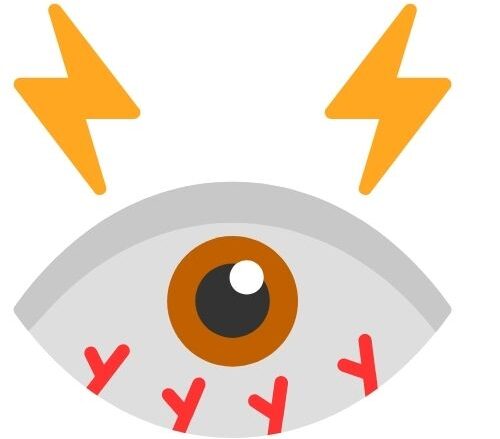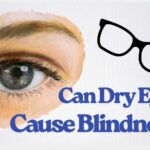What is Dry Eye?
Dry eye syndrome, also known as keratoconjunctivitis sicca, is a common condition that occurs when the eyes do not produce enough tears or when the tears evaporate too quickly. This can lead to discomfort, visual disturbances, and potential damage to the surface of the eye.
Anatomy of the Tear Film
To understand dry eye, it’s essential to know about the tear film, which consists of three layers:
- Lipids (Oily Layer): The outermost layer, produced by the meibomian glands, prevents evaporation of the underlying aqueous layer.
- Aqueous (Watery Layer): The middle layer, produced by the lacrimal glands, provides moisture and nourishment to the eye.
- Mucins (Mucous Layer): The innermost layer, secreted by goblet cells in the conjunctiva, helps the tear film adhere to the surface of the eye.
Causes of Dry Eye
Understanding the various causes of dry eye is essential for effective management and treatment. Here’s a closer look at the factors that can contribute to the development of dry eye syndrome:
1. Decreased Tear Production
- Aging:
- Tear production typically decreases with age. Older adults often experience reduced secretions from the lacrimal glands, leading to dry eye symptoms.
- Medical Conditions:
- Sjögren’s Syndrome: An autoimmune disorder that primarily affects moisture-producing glands, leading to significant dry eye and dry mouth.
- Rheumatoid Arthritis: This autoimmune disease can affect the eyes and decrease tear production.
- Thyroid Disorders: Conditions like hypothyroidism can influence tear production and contribute to dry eye symptoms.
- Medications:
- Certain medications can reduce tear production as a side effect. Common culprits include:
- Antihistamines: Often used for allergies, they can dry out mucous membranes.
- Antidepressants: Some SSRIs and other antidepressants may lead to dry eyes.
- Diuretics: Medications that promote fluid loss can decrease overall moisture levels in the body.
- Hormonal Medications: Birth control pills and hormone replacement therapy can affect tear production.
- Certain medications can reduce tear production as a side effect. Common culprits include:
2. Increased Tear Evaporation
- Environmental Factors:
- Dry or Windy Environments: Low humidity, wind, and extreme temperatures can lead to increased tear evaporation.
- Smoke and Pollution: Exposure to smoke (cigarette smoke or industrial pollutants) can irritate the eyes and exacerbate dryness.
- Prolonged Screen Time:
- Staring at screens (computers, tablets, smartphones) often reduces the blink rate, leading to increased evaporation of tears. This is commonly referred to as “computer vision syndrome.”
- Contact Lens Use:
- Contact lenses can disrupt the normal tear film, leading to dryness. Extended wear lenses or poor lens hygiene can exacerbate this issue.
3. Meibomian Gland Dysfunction (MGD)
- Meibomian Glands:
- These glands, located in the eyelids, produce the lipid (oily) layer of the tear film. Dysfunction of these glands can result in insufficient oil production, leading to rapid tear evaporation. MGD can be caused by:
- Hormonal Changes: Fluctuations in hormones, particularly in women, can affect meibomian gland function.
- Chronic Inflammation: Conditions such as blepharitis (inflammation of the eyelid) can block the glands and reduce oil secretion.
- These glands, located in the eyelids, produce the lipid (oily) layer of the tear film. Dysfunction of these glands can result in insufficient oil production, leading to rapid tear evaporation. MGD can be caused by:
4. Hormonal Changes
- Pregnancy and Menopause:
- Hormonal fluctuations during pregnancy, menstruation, and menopause can affect tear production and contribute to dry eye symptoms.
- Thyroid Imbalances:
- Both hypothyroidism and hyperthyroidism can influence eye health and tear production.
5. Systemic Diseases and Conditions
- Diabetes:
- Diabetes can lead to nerve damage (neuropathy), affecting the lacrimal glands and reducing tear production.
- Lupus and Other Autoimmune Diseases:
- These conditions can affect various glands and tissues in the body, including those that produce tears.
6. Nutritional Deficiencies
- Omega-3 Fatty Acids:
- A diet low in omega-3 fatty acids can impact tear production and the overall health of the ocular surface. Omega-3s are known to have anti-inflammatory properties and may help improve dry eye symptoms.
- Vitamins A and D:
- Deficiencies in these vitamins can affect eye health and tear production.
7. Surgery and Medical Procedures
- Refractive Surgery:
- Procedures like LASIK can temporarily disrupt the nerves that control tear production, leading to dry eye symptoms in the postoperative period.
- Certain Medical Treatments:
- Cancer treatments, including chemotherapy and radiation, can lead to dry eyes as a side effect.
Dry eye can result from a complex interplay of factors, including decreased tear production, increased evaporation, and various medical conditions. Understanding these causes is crucial for effective diagnosis and management. If you experience persistent dry eye symptoms, it’s important to consult an eye care professional who can help identify the underlying causes and develop a tailored treatment plan. By addressing the specific factors contributing to dry eye, individuals can achieve better eye comfort and overall health.
Symptoms of Dry Eye
Dry eye syndrome can manifest through a variety of symptoms that can significantly affect daily life. The severity and type of symptoms may vary from person to person, and they can fluctuate throughout the day. Here’s a comprehensive look at the common symptoms associated with dry eye:
1. Sandy or Gritty Sensation
- Many individuals report feeling as though they have sand or grit in their eyes. This uncomfortable sensation is often due to inflammation of the ocular surface.
2. Burning or Stinging
- A burning or stinging sensation is common and can be exacerbated by environmental factors, such as wind, smoke, or prolonged screen time.
3. Redness
- The eyes may appear red or inflamed. This is often due to irritation and can be more pronounced during flare-ups.
4. Watery Eyes
- Paradoxically, some people with dry eye may experience excessive tearing. This occurs as a response to irritation; the eyes produce tears in an attempt to compensate for dryness, but these tears are often of poor quality.
5. Blurred Vision
- Blurriness can occur intermittently, particularly after prolonged reading or screen use. This may be related to insufficient moisture on the eye surface affecting visual clarity.
6. Sensitivity to Light
- Increased sensitivity to bright lights or glare is common among individuals with dry eye. This can make it uncomfortable to be outdoors or in well-lit environments.
7. Eye Fatigue
- Individuals may experience a feeling of tiredness or heaviness in the eyes, especially after extended periods of concentration or visual tasks.
8. Difficulty Wearing Contact Lenses
- People who wear contact lenses often find that dryness makes it uncomfortable or even intolerable to wear them for extended periods.
9. Intermittent or Frequent Eye Discomfort
- Symptoms may vary throughout the day, with discomfort intensifying during certain activities or environmental conditions.
10. Eyelid Irritation or Inflammation
- Some individuals may experience irritation or inflammation of the eyelids, including conditions like blepharitis (inflammation of the eyelid margins).
11. Changes in Tear Quality
- Individuals may notice that their tears feel different—more watery or insufficient in moisture. This can be related to a lack of the oily layer needed to prevent evaporation.
Impact on Daily Life
The symptoms of dry eye can significantly impact quality of life. Individuals may find it challenging to perform daily tasks such as:
- Reading or Using Screens: Prolonged visual tasks can become uncomfortable and lead to eye strain.
- Driving: Glare and blurred vision can make driving difficult and unsafe.
- Engaging in Hobbies: Activities that require focus, such as knitting or playing video games, can become frustrating.
- Social Interactions: Sensitivity to light and discomfort can make social situations less enjoyable.
Recognizing the symptoms of dry eye is essential for early diagnosis and effective management. If you experience persistent or worsening symptoms, it’s crucial to consult an eye care professional for a thorough evaluation. By addressing these symptoms through appropriate treatment, individuals can improve their comfort and overall quality of life.
Diagnosis of Dry Eye
Diagnosing dry eye syndrome involves a comprehensive evaluation of symptoms, medical history, and a series of tests to assess tear production and ocular surface health. Here’s a detailed look at the diagnostic process:
1. Medical History
- Symptom Review:
- The eye care professional will begin by discussing your symptoms, their duration, and severity. Key questions may include:
- When did the symptoms start?
- Do they vary throughout the day or worsen in certain conditions?
- Are there any associated activities that exacerbate symptoms (e.g., screen time, reading)?
- The eye care professional will begin by discussing your symptoms, their duration, and severity. Key questions may include:
- Medical and Family History:
- A review of your medical history, including any autoimmune diseases (like Sjögren’s syndrome), thyroid disorders, or other conditions that could contribute to dry eye.
- Family history of dry eye or related conditions may also be considered.
2. Ocular Examination
- Visual Acuity Test:
- This standard test assesses how well you can see at various distances. It helps determine if dry eye is affecting your vision.
- Slit-Lamp Examination:
- A slit lamp is used to magnify and illuminate the front of the eye, allowing the doctor to evaluate the health of the eyelids, cornea, and conjunctiva. This examination can reveal signs of inflammation, redness, or damage to the surface of the eye.
3. Tear Production Tests
- Tear Break-Up Time (TBUT):
- This test measures how long it takes for tears to evaporate from the eye’s surface. After applying a special dye (usually fluorescein), you will be asked to blink and then look at a blue light. The time it takes for the tear film to break up is recorded. A shorter TBUT indicates dry eye.
- Schirmer Test:
- A small strip of special paper is placed under the lower eyelid to measure the amount of tears produced over a set period (typically 5 minutes). The amount of moisture on the strip provides insight into tear production.
4. Ocular Surface Staining
- Fluorescein Staining:
- A fluorescent dye is applied to the eye to highlight areas of dryness or damage on the cornea and conjunctiva. This test helps identify any epithelial defects or areas of staining that indicate dryness.
- Lissamine Green Staining:
- Similar to fluorescein, this dye is used to assess the health of the conjunctival surface and may highlight damage not seen with fluorescein alone.
5. Meibomian Gland Evaluation
- Expressing Meibomian Glands:
- The doctor may check the function of the meibomian glands by applying gentle pressure to the eyelids to see if oil is produced. Blocked or dysfunctional glands can contribute to evaporative dry eye.
6. Additional Tests
- Inflammation Tests:
- Some advanced tests measure the levels of inflammatory markers in the tear film, such as the Tear Lab Osmolarity Test, which assesses tear osmolarity. Elevated osmolarity levels indicate dry eye and related inflammation.
- Allergy Testing:
- If allergies are suspected to be contributing to dry eye symptoms, additional tests may be conducted to identify specific allergens.
7. Diagnostic Imaging
- Confocal Microscopy:
- In specialized cases, this imaging technique can be used to examine the corneal nerves and assess damage or changes in the ocular surface at a microscopic level.
Diagnosing dry eye syndrome is a multi-faceted process that involves evaluating symptoms, conducting various tests, and assessing tear production and ocular health. If you suspect you have dry eye, it’s essential to seek the expertise of an eye care professional. Early diagnosis and intervention can help manage symptoms effectively, improve comfort, and prevent potential complications. A tailored treatment plan based on accurate diagnosis is crucial for achieving the best outcomes.
Treatment Options of Dry Eye
The management of dry eye syndrome involves a variety of approaches tailored to the underlying causes and severity of symptoms. Here’s an in-depth look at the treatment options available:
1. Artificial Tears
- Over-the-Counter (OTC) Lubricating Eye Drops:
- Artificial tears are the first line of treatment for mild to moderate dry eye. These drops help to moisten the eye, providing relief from dryness and discomfort. There are many formulations available, including preservative-free options for frequent use.
- Gel Drops:
- Thicker than standard eye drops, gel formulations provide longer-lasting moisture and may be particularly beneficial for nighttime use.
2. Prescription Medications
- Anti-inflammatory Drops:
- Cyclosporine A (Restasis): This prescription eye drop helps to reduce inflammation in the eyes and can increase tear production. It may take several weeks to see the full effects.
- Lifitegrast (Xiidra): Another prescription drop that targets inflammation and helps relieve symptoms of dry eye.
- Corticosteroid Eye Drops:
- Short-term use of steroid drops may be prescribed to reduce significant inflammation, but long-term use is typically avoided due to potential side effects.
3. Punctal Plugs
- Temporary or Permanent Plugs:
- Tiny plugs can be inserted into the tear ducts (puncta) to block drainage and help retain tears on the surface of the eye. Temporary plugs can be used for trial periods, while permanent plugs may be considered for ongoing management.
4. Meibomian Gland Dysfunction Treatments
- Warm Compresses:
- Applying a warm compress to the eyelids can help unclog meibomian glands and promote the secretion of the oily layer of tears, reducing evaporation.
- Eyelid Hygiene:
- Regularly cleaning the eyelid margins with eyelid scrubs or wipes can help manage conditions like blepharitis, which can contribute to dry eye.
- Lipiflow:
- A thermal pulsation treatment that applies heat and pressure to the eyelids to stimulate meibomian gland function and enhance oil production.
5. Lifestyle Modifications
- Environmental Adjustments:
- Using humidifiers to increase moisture in the air, avoiding smoke and wind, and wearing sunglasses or protective eyewear outdoors can help reduce symptoms.
- Screen Time Management:
- Following the 20-20-20 rule (every 20 minutes, look at something 20 feet away for 20 seconds) can help reduce eye strain during prolonged screen use.
- Stay Hydrated:
- Drinking plenty of water can help maintain overall body hydration, which is beneficial for tear production.
6. Nutritional Supplements
- Omega-3 Fatty Acids:
- Supplements containing omega-3 fatty acids (such as fish oil) may help improve tear production and reduce inflammation. Some studies suggest that they can enhance the quality of tears.
- Vitamin A and D:
- Ensuring adequate levels of these vitamins may support overall eye health and tear production.
7. Surgical Options
- Punctal Occlusion Surgery:
- In severe cases of dry eye that do not respond to other treatments, surgical options to permanently close the tear ducts may be considered. This prevents tears from draining away and helps maintain moisture.
8. Advanced Therapies
- Scleral Contact Lenses:
- These special lenses create a tear-filled vault over the cornea, providing relief for those with severe dry eye. They can protect the ocular surface and enhance comfort.
- Autologous Serum Eye Drops:
- Made from a patient’s own blood serum, these drops contain natural growth factors and nutrients that can help heal the ocular surface and improve symptoms.
Treating dry eye syndrome requires a multifaceted approach tailored to the individual’s specific needs and the underlying causes of their symptoms. It’s important to consult with an eye care professional to develop a personalized treatment plan. Regular follow-ups may be necessary to adjust the treatment based on symptom progression and response. With the right management strategies, many individuals can achieve significant relief from dry eye symptoms and improve their overall quality of life.
Managing Dry Eye in Daily Life
Dry eye syndrome can significantly affect various aspects of daily living, leading to discomfort and challenges in everyday activities. Here’s a closer look at how dry eye can influence different areas of life:
1. Work and Productivity
- Screen Time Challenges:
- Many people spend hours in front of computers, tablets, or smartphones. Dry eye can lead to increased discomfort, making it difficult to focus. Symptoms like blurred vision and eye fatigue can hinder productivity and cause frustration.
- Visual Tasks:
- Activities that require sustained attention, such as reading, writing, or detailed work, can become challenging. Individuals may need to take more frequent breaks, which can disrupt workflow.
2. Social Interactions
- Reduced Comfort in Social Situations:
- Dry eye symptoms can make individuals less comfortable in social settings, particularly in brightly lit or dry environments. This may lead to avoidance of gatherings or outdoor activities.
- Impact on Communication:
- Discomfort can distract from conversations and interactions, affecting engagement and enjoyment in social situations.
3. Physical Activities
- Exercise Limitations:
- Physical activities, especially those outdoors, can exacerbate dry eye symptoms due to wind, sun, or environmental conditions. This may discourage individuals from participating in sports or outdoor hobbies.
- Eye Protection:
- Those with dry eye may need to wear protective eyewear, such as sunglasses or goggles, during activities, which can be cumbersome and affect the overall experience.
4. Travel and Commuting
- Travel Discomfort:
- Air travel is particularly challenging for individuals with dry eye, as cabin air is often dry and can exacerbate symptoms. Extended travel can lead to significant discomfort.
- Driving Challenges:
- Symptoms like blurred vision and light sensitivity can make driving difficult and potentially unsafe, impacting independence and mobility.
5. Home Environment
- Need for Adjustments:
- Individuals may find it necessary to use humidifiers, adjust lighting, or modify their home environment to alleviate symptoms. This can lead to changes in lifestyle and routine.
- Increased Eyelid Hygiene:
- Regular eyelid cleaning and warm compresses may become a part of daily routines, requiring additional time and effort.
6. Mental and Emotional Well-Being
- Anxiety and Stress:
- Chronic discomfort can lead to increased anxiety and stress levels. Concerns about eye health and the impact of dry eye on daily activities can weigh heavily on mental well-being.
- Quality of Life:
- The persistent nature of dry eye symptoms can negatively affect overall quality of life, leading to frustration, irritability, and a sense of helplessness.
7. Relationships and Family Life
- Impact on Family Activities:
- Dry eye can limit participation in family outings, vacations, or activities that require prolonged visual focus, potentially straining relationships.
- Shared Activities:
- Discomfort during shared activities, such as watching movies or playing games, can hinder enjoyment and connection with family and friends.
Dry eye syndrome can have a profound impact on daily life, affecting work, social interactions, physical activities, and emotional well-being. Recognizing these challenges is essential for effective management and support. If you or someone you know is struggling with dry eye, it’s important to seek help from an eye care professional. With appropriate treatment and lifestyle adjustments, many individuals can find relief and improve their quality of life, enabling them to engage more fully in their daily activities.
Dry eye is a prevalent condition that can significantly impact quality of life. Understanding its causes, symptoms, and treatment options is essential for effective management. If you experience persistent dry eye symptoms, it’s crucial to consult an eye care professional for a comprehensive evaluation and personalized treatment plan. With appropriate care and lifestyle adjustments, individuals with dry eye can find relief and maintain eye comfort.
more health topics, click here








